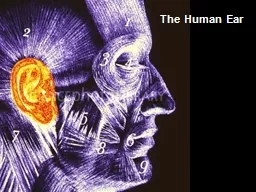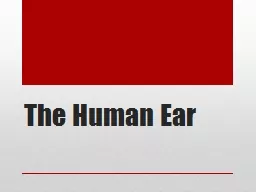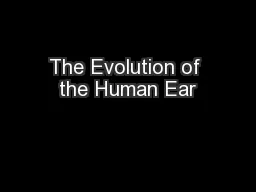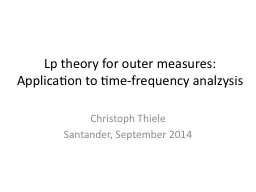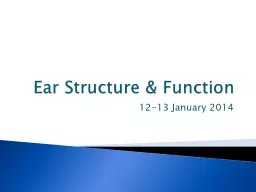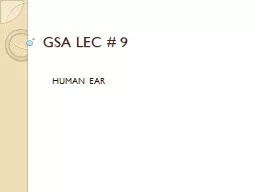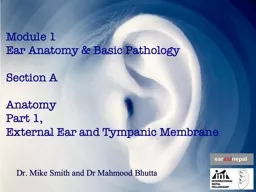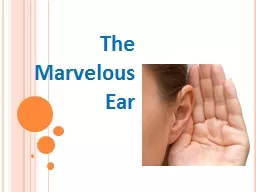PPT-The Human Ear Name the structures that make up the outer ear.
Author : celsa-spraggs | Published Date : 2018-11-01
Pinna External Auditory Meatus Ear Canal Tympanic Membrane Ear Drum What are the ossicles The small bones of the ear Hammer Malleus Anvil Incus Stirrup Stapes Name
Presentation Embed Code
Download Presentation
Download Presentation The PPT/PDF document "The Human Ear Name the structures that m..." is the property of its rightful owner. Permission is granted to download and print the materials on this website for personal, non-commercial use only, and to display it on your personal computer provided you do not modify the materials and that you retain all copyright notices contained in the materials. By downloading content from our website, you accept the terms of this agreement.
The Human Ear Name the structures that make up the outer ear.: Transcript
Download Rules Of Document
"The Human Ear Name the structures that make up the outer ear."The content belongs to its owner. You may download and print it for personal use, without modification, and keep all copyright notices. By downloading, you agree to these terms.
Related Documents

